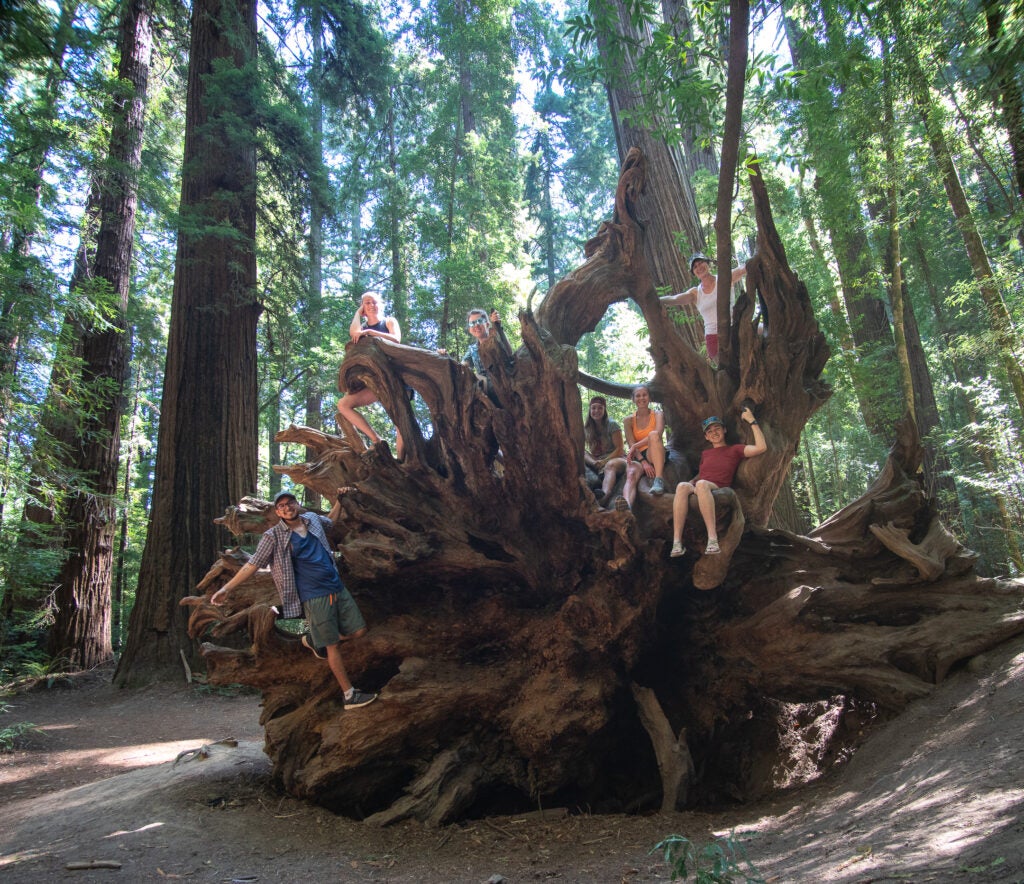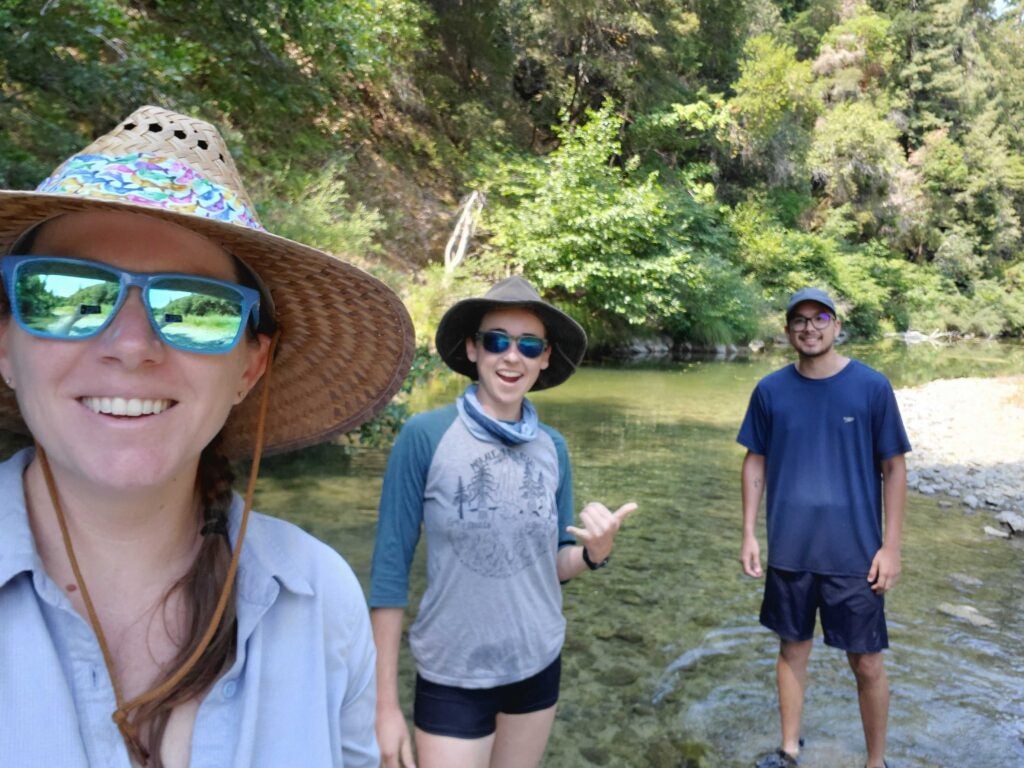
At the end of July, the Amazon Warriors teamed up with our academic-sister labs, the Stein Lab and the Hellman Lab, to do some field work on the three-spined stickleback. Our plan was to observe sticklebacks in the wild, in particular the males as they exhibit really interesting nesting and parenting behavior. We wanted to test how stickleback dads respond to changes in their environment. So we packed up our trusty UC Davis SUV,(which we christened Dave) and drove up to Boonville in the Anderson Valley. Laura Stein and Faith Leri had arrived the week before and were already surveying the Navarro River for nesting stickleback males.
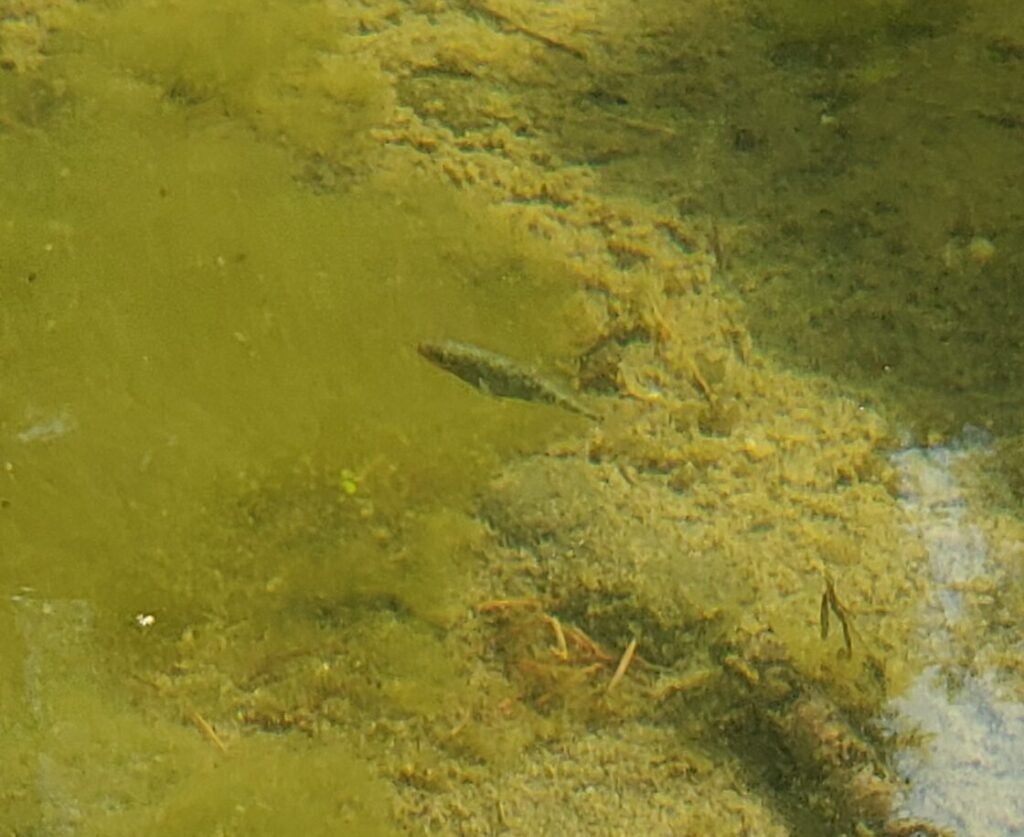
Faith showed us in how to search and identify nesting sticklebacks and then trained us in how to observe and measure all the different behaviors they perform. Stickleback dads stay busy fanning their eggs, removing algae, and chasing off invading fish; being a parent is a full time job, no matter the species. Pretty soon, Jon spotted another male nearby! Hopeful that there might be males hiding out in the area, we set off to explore new stretches of the river.
We were soon joined by Jennifer Hellmann and Michaela Rogers, who added their sharp eyes to the hunt for more sticklebacks. In addition to visual surveys, we decided to set some minnow traps, baited with dog biscuits and deli meat (yum!). Our first attempt yielded lots of crayfish, roach, and snails, but no sticklebacks. Those spiny fish were too clever for us!
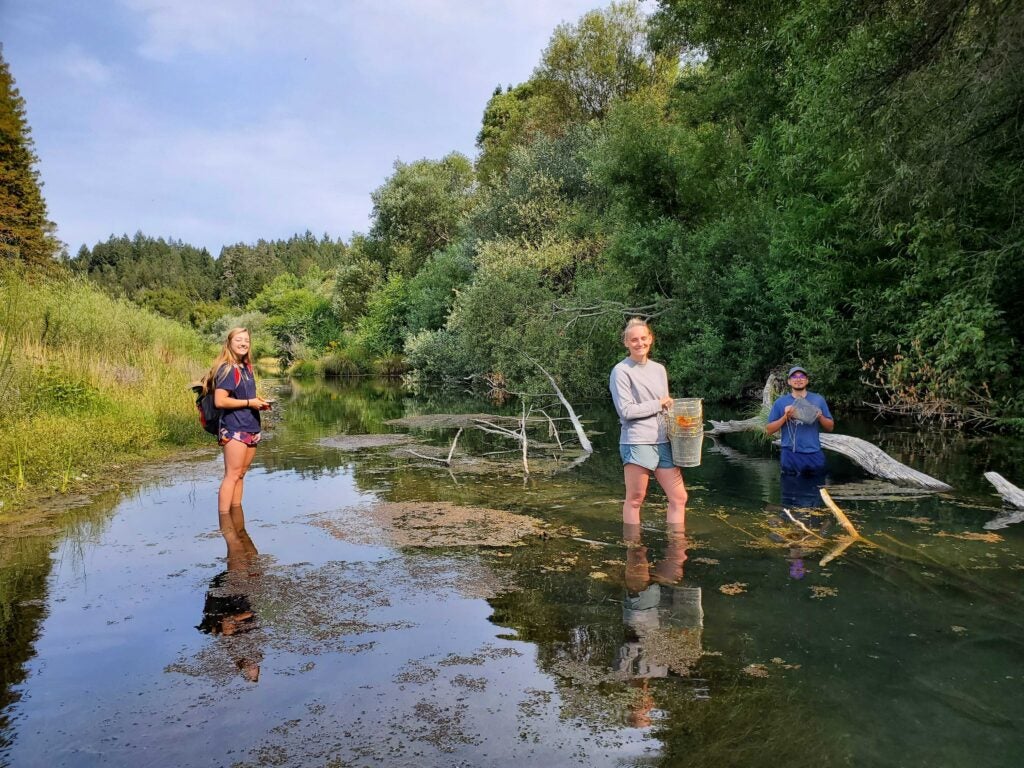
After exploring miles of the Navarro River, we found a grand total of 5 nesting males over the entire week. We found lots of juveniles, which meant that the stickles had at least one successful breeding round earlier in the summer. But adults were few and far in between. We unfortunately were left with the conclusion that the accelerate pace of climate change, which has included major droughts and extreme heat waves here in California, are really doing a number on the local stickleback populations. While disappointing, this observation sparked lots of new ideas for the team in terms of follow-up experiments investigating whether and how stickleback behavior (and changes in their behavior) might help them adjust to the increasing temperature and decreasing water levels. Plus this gave us the unexpected opportunity to explore new parts of the river, opening up lots of potential sites for future work!
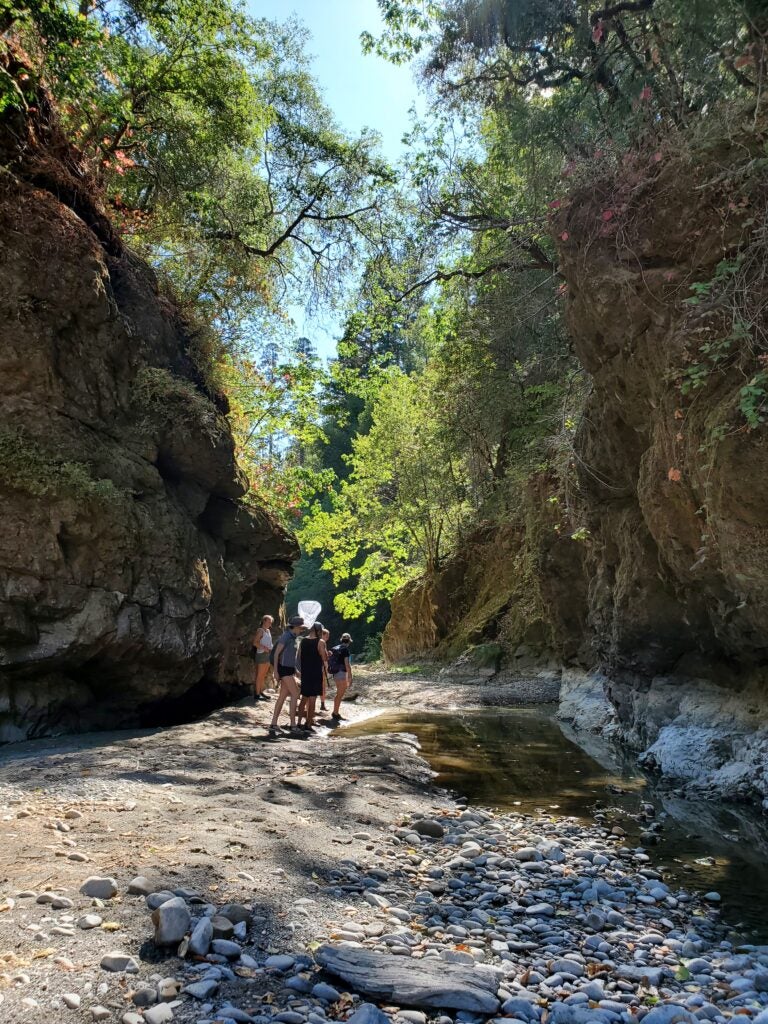
After trekking through the river and watching those busy dads, we also made sure to take some time to enjoy some of the wine and sunshine in the Anderson Valley. The wine was delicious and we fell in love with the trees in Hendy Woods. But most importantly, we made some excellent, new StickleBuds. We’re so glad to know there are folks in the world who love fish as much as we do and can’t wait to see what field work adventures the future may hold <3
